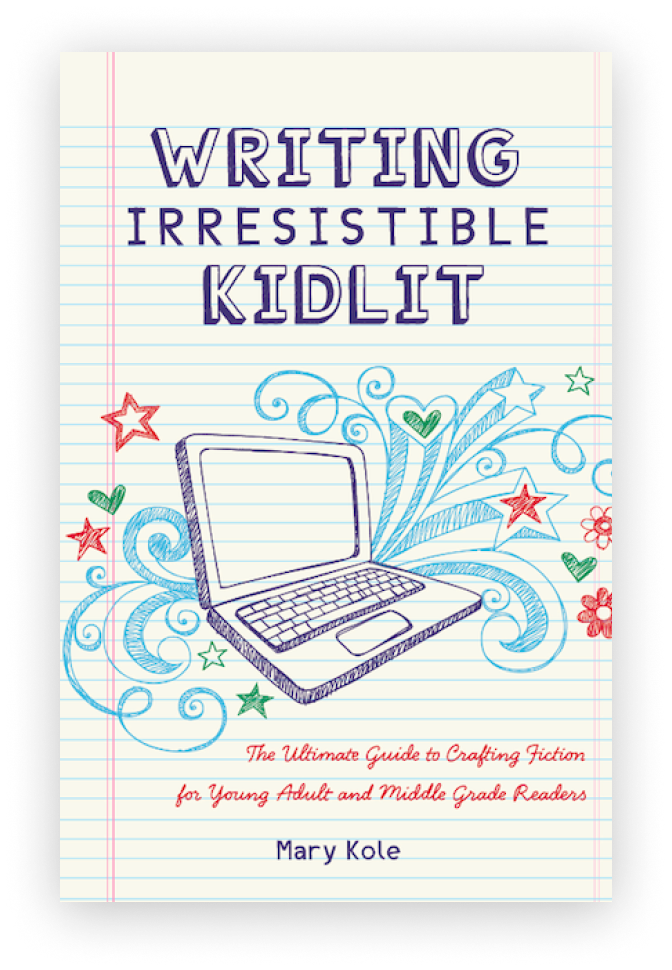Understanding and Developing
the Premise of a Story
By Mary Kole
Mary Kole is a former literary agent, freelance editor, writing teacher, author of Writing Irresistible Kidlit, and IP developer for major publishers, with over a decade in the publishing industry.
If you are a fiction writer, you know that the premise of a story is the foundation of everything else that follows. Without a strong story premise, your entire project might not have the chance to get off the ground. It is the structure upon which your characters, plot points, and settings hang. But what is the premise of a story? How is this all-important component defined? Let’s dive in and get on the same page.
What Is the Premise of a Story?
The premise of a story generally consists of two parts—a character and a peek at their plot. The character should be clearly portrayed with an objective, a motivation, and an obstacle, or what’s keeping them from achieving what they want. Most contemporary stories are character-driven, so beginning with a focus on character is a good idea.
From there, you also want to imagine the main story conflict which, ideally, challenges the character’s deepest desire and identity. You can use many different structures here, like the three-act or the hero’s journey.
The premise of a story should also include stakes—or specific reasons why the journey matters and consequences if the hero isn’t successful. Without stakes, there is no real tension in the story for readers to engage with. This premise should also reflect what makes your story unique—like story setting, worldbuilding, or an interesting historical time period.
Once you are satisfied with the premise of a story that you’re excited to write, you can develop your plot into a novel outline.
The Relationship Between Character and Plot
The premise of a story is what ultimately defines and shapes the narrative of your novel, so it’s important to understand how to develop it into something that has enough architecture to carry a long work of fiction. Operating behind the scenes of every good premise is a universal theme that allows you to develop multiple layers of complexity.
If your story is very straightforward, going from point A to point B, you might have enough material for a picture book, but not for the premise of a story for older readers. You need to buttress your character and plot with subplots, secondary characters, and lively scenes full of tension and dialogue.
And the elements of your story shouldn’t be static, either. Your character development should always interweave with your overall plot structure because these two elements should be developed together—the character is proactive and affects the plot, and meanwhile, the plot affects the character. There needs to be a reason in every premise of a story for why this specific character is experiencing this particular story. If you haven’t found this why yet, you might not have enough of a book idea just yet.
Pitching The Premise of a Story
When you pitch your story’s premise, be sure not just to mention its basic elements but also explain how everything is connected. You’ll want to craft a logline or elevator pitch that focuses on character, plot, theme, and any unique elements that differentiate your particular work from other similar stories in the market.
In order to participate in the market, you need to know what it’s doing, which is why researching comp titles is important. If you find that absolutely nothing has a premise similar to yours, this could either be an asset (you have truly written something unique) or a liability (there’s a reason nobody’s done it).
You’ll also want to research literary agents and publishers that represent the type of work you’ve created. A big part of honing in on the premise of a story is figuring out who will most connect with your pitch.
Understanding and developing a solid premise for a story is key to focusing yourself in preparation for your next book project. Many book ideas are created premise-first, and if you want to work intentionally, this is a great way to make sure there’s a “there” there with your story, before you invest months or years into drafting it. (If it’s not clear, I’m a huge plotter in the pantser vs plotter debate!) Get in the habit of working smarter not harder by pouring your creativity into the premise of a story, first, and then the manuscript itself, second.

Click here to purchase Writing Irresistible Kidlit, my book on fiction craft for MG and YA novels, out from Writer's Digest Books. This will show you my writing craft philosophy and give you lots of valuable advice, including tips for the novel revision process and self-editing. There are over 35 example novels cited and discussed throughout. It’s a valuable resource for any writer’s toolkit.
Click here to purchase Irresistible Query Letters, my book on query letters, including over forty examples with comprehensive notes on each one. There’s a ton of submission advice, best practices, and insider information in these pages, and you’ll really enjoy seeing what other writers are doing in the slush.
Click here to purchase Writing Interiority: Crafting Irresistible Characters, my book on interiority and character creation. Explore your protagonist’s thoughts, feelings, reactions and interpretations, expectations, and inner struggles to create a rich, immersive experience. This guide will empower you to create characters who live and breathe on the page, fostering an unbreakable bond with your audience.





